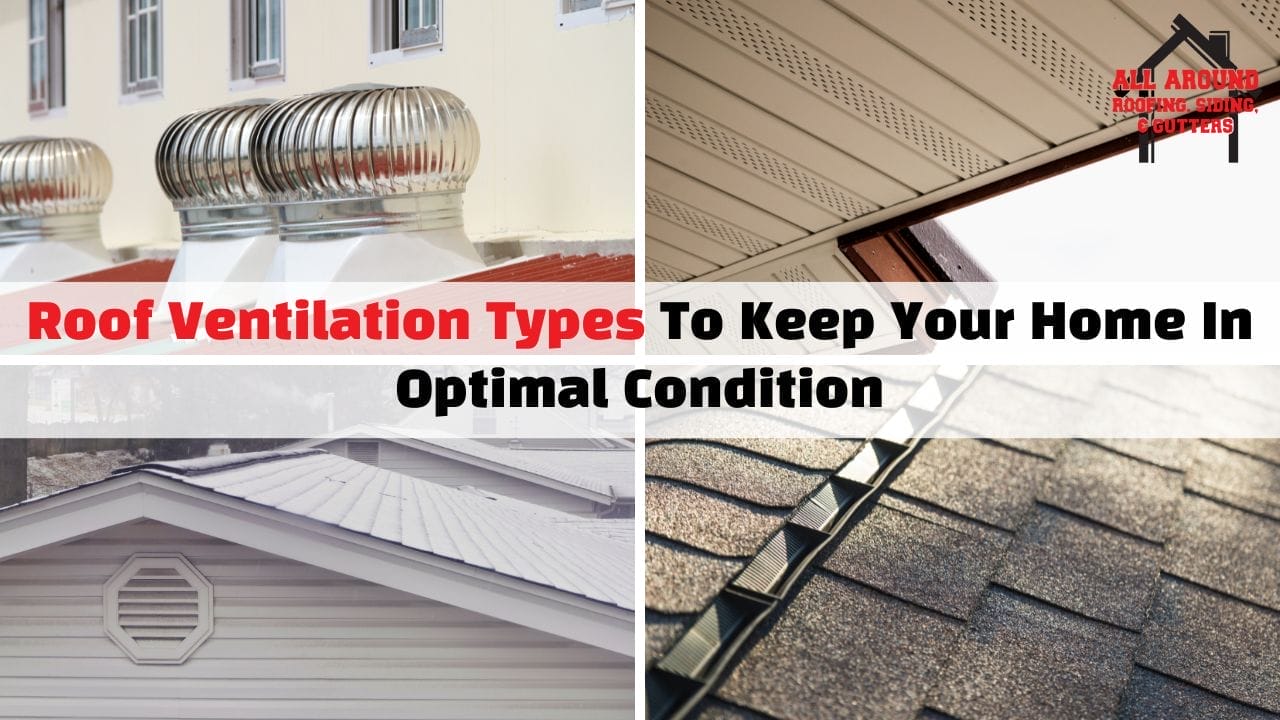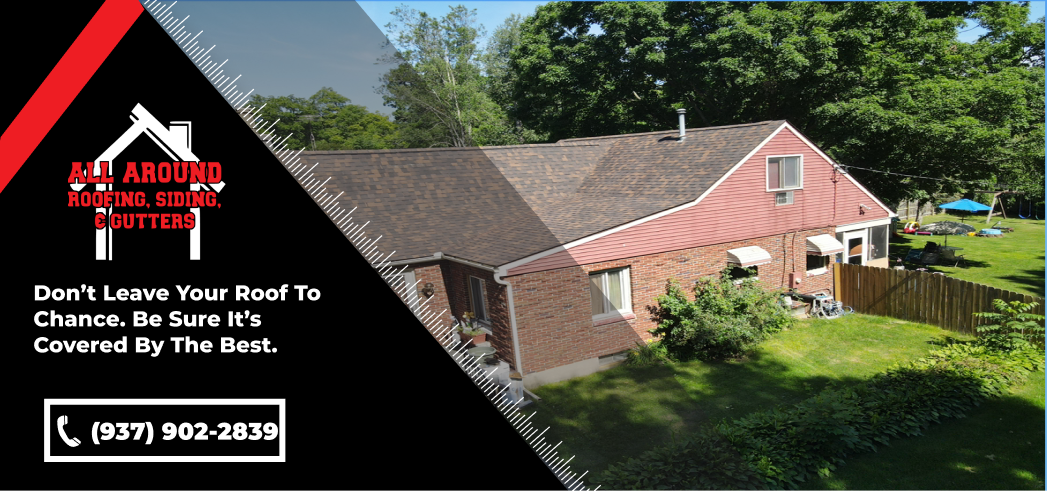With the goal to keep your home in the best shape possible, roof ventilation shouldn’t be overlooked. The secret to keeping your living space comfortable and healthy is to recognize the value of sufficient ventilation. It guarantees the movement of fresh air, prevents the buildup of moisture, and helps control the indoor temperature. Let’s explore the advantages of the different kinds of roof ventilation systems.
Types of Roof Vents
It’s important to select the very best vents for your house. Some of the most widely used roof ventilation types are:
1. Soffit Vents (Eave Vents)
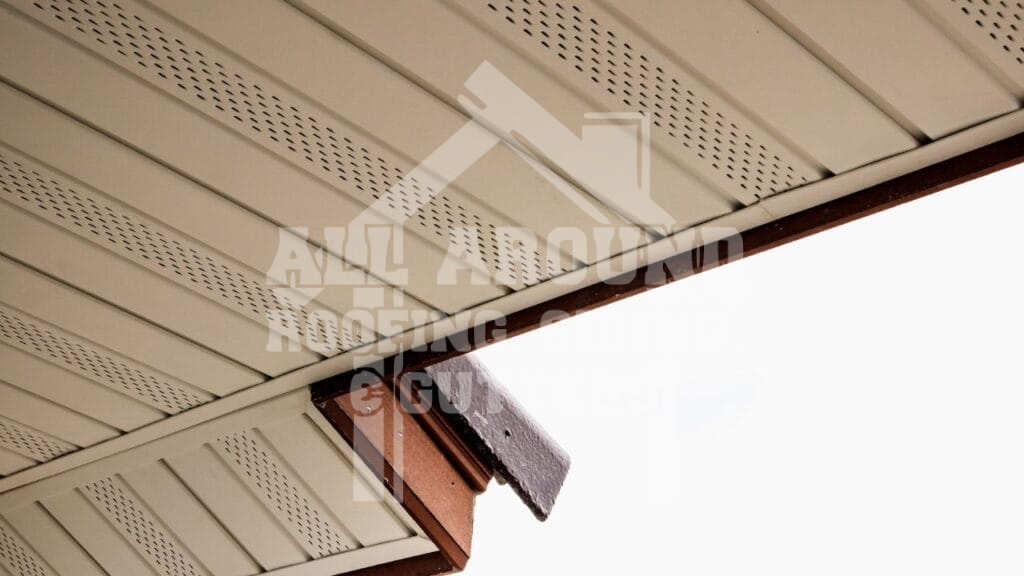
The first on our list is soffit vents, also known as eave vents, which are a common choice for bringing air into buildings. Placed under the eaves and either built into the soffit or separately installed, these vents let air flow into the attic.
Their purpose is to allow cool air in while hot, moist air escapes through additional vents higher in the roofing system, preventing it from accumulating in the attic and causing discomfort. These vents offer continuous ventilation, maintaining a pleasant indoor temperature and reducing the workload on air conditioning systems.
2. Gable Vents
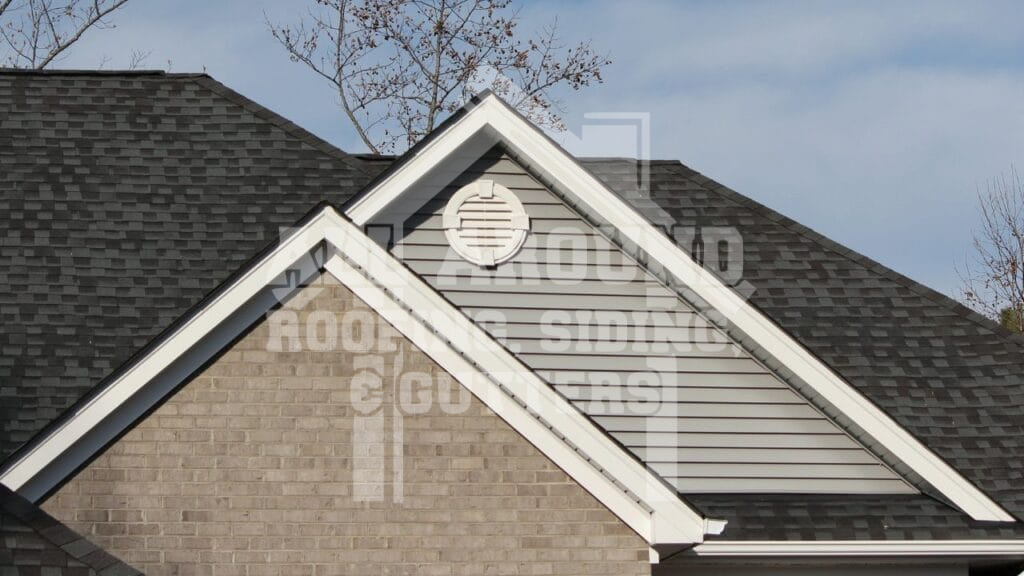
Gable vents are passive vents found on the gable ends of a home. These vents allow air to move in and out of the attic, promoting cross-ventilation. They are usually rectangular or triangular and placed near the gable peak.
With proper ventilation, they allow warm air to escape in hot weather, which lessens the strain on cooling systems. Gable vents help stop moisture buildup in the attic, which is essential to stop mold growth and wood rot that could jeopardize the stability of the home.
Gable vents might not work well for complicated roofs with many peaks and additions. They can also disrupt the natural flow of air created by other vents, making the house less comfortable and using more energy. So, be careful when using gable vents with other ventilation methods.
3. Ridge Vents
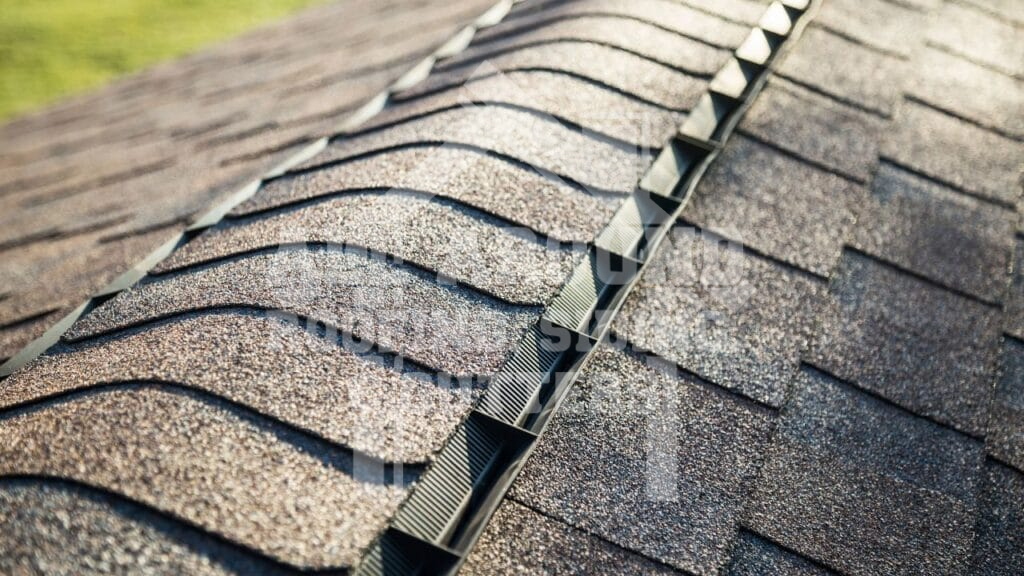
Ridge vents provide steady airflow and blend in perfectly for an almost invisible vent system, as they run along the ridge of the roof. By efficiently promoting attic ventilation, these vents help avoid problems like wood rot, mold, and moisture build up.
They work by letting hot air out of the attic and work with soffit vents to create a constant breeze that helps control the interior temperature. They work well in homes with long ridge lines, but may not be right for every property.
Ridge vents don’t have a special design to control airflow, so in places with a lot of rain or strong wind, they might not be the best choice. To increase the efficiency of ridge vents, you can choose to install a baffle to make sure air can flow freely.
4. Wind and Turbine Vents
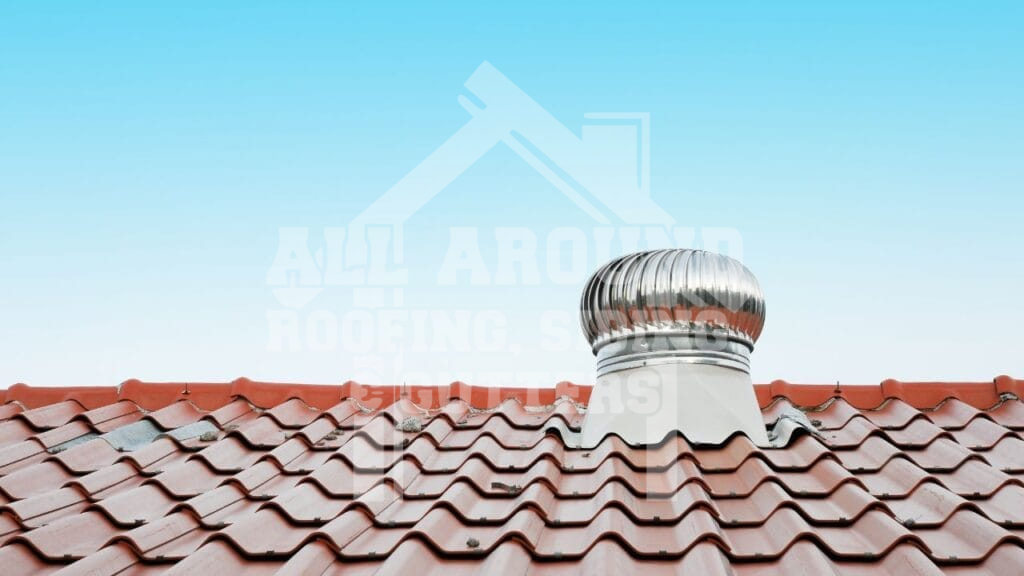
Residential roofs are often home to wind and turbine vents, sometimes referred to as whirlybird vents. To move air, they rotate blades much like a turbine. Cooler, dry air from outside is brought in, and warm, humid air from the attic is removed. These roof-mounted vents provide an inexpensive, non-electric form of attic ventilation.
One advantage of wind and turbine vents is they facilitate the escape of warm air from the attic, even in the absence of strong winds. They are an inexpensive, low maintenance, and easy to install option.
5. Solar Powered Attic Vents
The next option is solar powered attic vents, which are a great choice for keeping attics cool in Dayton, Ohio. They use solar power, making them eco-friendly and cost-effective. These vents can be placed almost anywhere on the roof and have advantages like being easy to install and improving attic air quality.
However, it’s important to think about the local weather when choosing these vents. In places with very little sun, they might not work as well, and other options might be needed. Also, some people might not like how solar powered attic vents look compared to other vents.
6. Box Vents (Louver Vents)
Common intake vents used to allow air into the attic are box vents, also known as louver vents. These are square shaped vents that can be positioned near the top or the sides of a roof. They’re not as efficient as some vents, like ridge vents, but they’re still a good choice and function well on roofs with intricate wiring.
To ensure that the attic receives enough air, people frequently install multiple box vents across the roof. However, this vent option might not function as well in areas that experience constant calm or little wind. It’s important to consider both the local climate and the needs of the home when selecting a vent.
7. Fascia Vents
And the last vents on our list are fascia vents. In order to help avoid problems like condensation, mold, and ice dams, they are made to allow airflow into the space between the roofing materials and the fascia of the roof.
Generally simple to install, fascia vents are essential for increasing airflow through the fascia board and preventing insects, leaves, and other debris from entering the roofing system.
There are several variations of these vents, such as over fascia ventilators, circular vents, and ventilation strips. In order to prevent condensation, they are mounted on top of the fascia to allow airflow within the attic space.
Types Of Roof Ventilation
As a homeowner, there are two types of roof ventilation that you should keep in mind: passive and active vents.
What is Passive Roof Ventilation?
Passive roof ventilation is a system that uses the wind to move air through the attic and out of the building without electricity. These systems can go on the roof or walls and use the natural movement of air, like the stack effect, to create ventilation. There are different types, like soffit vents that let cool air in and ridge vents that let hot air out.
Benefits of Passive Roof Ventilation
1. Natural Airflow:
Passive roof ventilation uses natural air movement, which is more sustainable than electric powered options.
2. Cost Effectiveness:
Passive roof vents are usually less expensive than active ones and don’t need electricity or sunlight to work.
3. Energy Efficiency:
Passive roof vents control the attic temperature, stopping drafts and making energy bills lower.
4. Low Maintenance:
Passive roof vents have fewer parts that move, so they need fewer repairs compared to active vents.
What is Active Roof Ventilation?
Active roof ventilation uses machines like fans or turbines to make air move in the attic, no matter the weather. These are good for complex structures and can work together with passive systems for the best results. While active systems may be more noticeable, they provide more ventilation compared to passive systems.
Benefits of Active Roof Ventilation
1. More Fresh Air:
Active ventilation systems make the attic like a vacuum, pulling in fresh air and pushing out old, still air.
2. Better Moisture Control:
These systems move fresh air through the attic, keeping it the right temperature and stopping drafts. This helps control moisture and stops mold and mildew growth.
3. Work in Any Weather:
Active ventilation systems keep working no matter the weather, so they’re more reliable than passive systems.
Your pick between active and passive vents depends on your aesthetic preferences, your budget, and what your home needs. It’s a good idea to have a professional roofer install the system you choose for the best results.
How to Choose the Right Roof Ventilation Type for Your Home
To determine what is the best type of roof ventilation for your home, use these guidelines:
- Attic Size:
Look at the shape and layout of your attic to find your needs. For every 150-square feet of attic space, you require roughly 1-square foot of ventilation.
- Consider Your Location:
The climate where you live is an important factor. Turbine vents may perform better if there is a lot of wind, whereas soffit vents are a good option if it’s humid.
- Select Active or Passive Ventilation:
Active systems use fans, whereas passive systems use natural convection. When making a decision, consider cost, upkeep, and energy efficiency.
- Select Vent Types:
There are various types of vents, including wind turbines, box vents, ridge vents, and soffit vents. It’s crucial to choose vents that work well together, like soffit vents and ridge vents.
- Balance Intake and Exhaust:
To maintain proper airflow, make sure there are the same number of intake and exhaust vents for a balanced system.
- Seek for Energy-Efficient Vents:
Electric or solar vents can reduce energy consumption and associated costs.
- Consult an Expert:
For the ideal setup, consult a roofer or contractor, as installing vents can be challenging.
Conclusion
Choosing the right roof ventilation is crucial for a healthy home. Whether you go for passive or active ventilation, make sure the vents you choose meet your specific needs. Each ventilation type has its pros and cons, so think about what your home needs and the local weather conditions.
Though picking the right ventilation keeps your home in good condition, it is equally important to have professionals help you with your roof vent installation, and for that, All Around Roofing, Siding & Gutters has got your back.
Get The Best Roof Ventilation Services
At All Around Roofing, Siding & Gutters, we aim to offer the best roofing services in Dayton, OH. With over 40 years of combined experience, we understand roof ventilation systems inside and out. We understand the best techniques, making us the go-to roofing company in Dayton, OH.
Our good reputation speaks for itself. We’re recognized by the National Roofing Contractors Association, have an A+ rating from the Better Business Bureau, and have earned praise from HomeAdvisor. Homeowners trust us for quality workmanship, and if you are looking for the best roofing services, contact us at (937) 902-2839.

